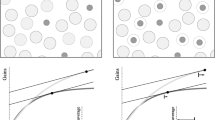Summary
When fitness of a resource-limited animal depends only on that individual's share of the total resource in a habitat patch and individuals are free to move to the patch where their gains are highest, population density matches resource availability under the simple assumption that individual fitness increases with resource use. Previous theory on habitat matching required the stronger assumption that individual fitness was directly proportional to (rather than monotonically increasing with) resource use. The basic theory suggests conditions under which population density empirically indicates habitat quality. Extensions of this basic theory apply when individuals that are free to move among resource patches interact by interfering with each other's resource extraction or by competing unequally. Analysis of existing models of such “ideal free competition” yields conditions for a single general matching rule in which the logarithm of “crowding” is a linear function of the logarithm of resource abundance. Double logarithmic plots of empirical data on habitat use and habitat quality based on this rule furnish possible graphical indicators of the occurrence and intensity of competition in nature.
Similar content being viewed by others
References
Fagen, R. (1985a) Models of fish population structure. Annual report to Alaska Sea Grant College Program, Contract R-06/22.
Fagen, R. (1985b) A simplified Sitka blacktailed deer model. University of Alaska, Juneau Technical Report UAJ-SFS 8517.
Fretwell, S. (1972)Populations in a seasonal environment. Princeton University Press, Princeton, New Jersey.
Fretwell, S. and Lucas, H. (1969) On territorial behavior and other factors influencing habitat distribution in birds. I. Theoretical development.Acta Biotheoretica 19, 16–36.
Latané, B. (1966) (ed.) Studies in social comparison.Journal of Experimental Social Psychology, Supplement 1.
Lefebvre, L. (1983) Equilibrium distribution of feral pigeons at multiple food sources.Behavioral Ecology and Sociobiology 12, 11–17.
Lloyd, M. (1967) Mean crowding.Journal of Animal Ecology 36, 1–30.
Maynard Smith, J. (1982)Evolution and the theory of games. Cambridge University Press, New York.
Parker, G. A. (1970) The reproductive behaviour and the nature of sexual selection inScatophaga stercoraria L. (Diptera: Scatophagidae). II. The fertilization rate and the spatial temporal relationships of each sex around the site of mating and oviposition.Journal of Animal Ecology 39, 205–28.
Parker, G. A. (1978) Searching for mates. InBehavioural Ecology: an Evolutionary Approach (J. R. Krebs and N. B. Davies, eds.) pp. 214–44. Blackwell Scientific, Oxford, UK.
Parker, G. A. and Sutherland, W. J. (1986) Ideal free distributions when individuals differ in competitive ability: phenotype-limited ideal free models.Animal Behaviour 34, 1222–42.
Pulliam, H. R. and Caraco, T. (1984) Living in groups: is there an optimal group size? InBehavioural Ecology: an Evolutionary Approach, 2nd edn (J. R. Krebs and N. B. Davies, eds.) pp. 122–47. Blackwell Scientific, Oxford, UK.
Rosenzweig, M. L. (1981) A theory of habitat selection.Ecology 62, 327–35.
Southwood, T. R. E. (1978) Habitat, the templet for ecological strategies?Journal of Animal Ecology 46, 337–65.
Sutherland, W. J. (1983) Aggregation and the “ideal free” distribution.Journal of Animal Ecology 52, 821–8.
Van Horne, B. (1983) Density as a misleading indicator of habitat quality.Journal of Wildlife Management 47, 893–901.
Author information
Authors and Affiliations
Rights and permissions
About this article
Cite this article
Fagen, R. A generalized habitat matching rule. Evol Ecol 1, 5–10 (1987). https://doi.org/10.1007/BF02067264
Issue Date:
DOI: https://doi.org/10.1007/BF02067264




